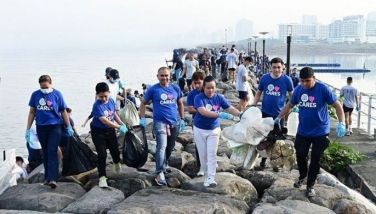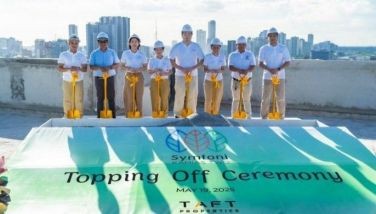Life-saving links and apps
The recent deadly earthquake that hit Myanmar and Thailand triggered calls and alerts for better, effective disaster preparation-monitoring and management.
Various warnings about impending earthquakes have also been published, seriously calling on all to review and ensure that all are genuinely ready and prepared for any “Big One” or “Megaquake” that may come sooner or later.
Filipinos should also always remember that of 193 United Nation member states, “the Philippines remains the most at-risk country for extreme natural events and climatic threats” and has, for the 3rd consecutive year, remained number 1 with the highest risk, according to the September 2024 World Risk Report.
How ready and prepared are you and the rest of our people for deadly earthquakes and other disasters that may hit your location or other locations within our country?
Please carefully note, bookmark, and, widely share the following important and helpful information for disaster preparedness, monitoring and management shared by Dr. Jabez Joshua M. Flores (Senior Lecturer 2, Faculty of Management and Development Studies, University of the Philippines Open University Freelance Environmental Consultant and Licensed Drone Pilot).
The following very important websites have crucial, life-saving information about disaster hazard areas and about various types of disasters, including information about preparedness, monitoring and management:
1) https://hazardhunter.georisk.gov.ph/ and 2) https://www.phivolcs.dost.gov.ph/
“HazardHunterPH is the country's one-stop shop for hazard assessment. It is a product of GeoRisk Philippines, a multi-agency initiative led by the Philippine Institute of Volcanology and Seismology (PHIVOLCS), funded by the Department of Science and Technology (DOST) from 2018-2020 and operationalized by DOST-PHIVOLCS in 2020.”
This link will allow you to find out “if a location is prone to seismic, volcanic, or hydrometeorologic hazards. The link will also “generate hazard assessment reports and show which critical facilities and areas in the Philippines are prone to different hazards. Know more about HazardHunterPH here.“
The Philvolcs link has information about the following, including how to prepare for, monitor and manage these: volcano, earthquake, tsunami, landslide, other hazards.
Dr. Jabez Flores also kindly shared and posted about this very valuable information:
“Earthquake Network Crowdsourced smartphone-based Earthquake Early Warning System.”
"The idea is to use the accelerometer on-board smartphones to detect in real-time the shaking induced by an earthquake. When an earthquake is detected, an alert is sent to all the smartphones within the affected area. If you are not too close to the epicenter, you can receive the alert in advance and you can take cover before you are reached by the damaging waves of the earthquake."
Real time earthquake alerts on your smartphone are possible thanks to Earthquake Network.
“Started in 2012, Earthquake Network is a citizen science initiative implementing a crowdsourced Earthquake Early Warning system based on networks of smartphones. More than 20 million people took part in the initiative and the system has sent more than 7,800 real time earthquake alerts. In many seismic countries, Earthquake Network is currently the only alert system open to the public.
To be part of the initiative and receive the alerts please install the 3) Earthquake Network app on your smartphone.
Download this mobile app, for free: https://sismo.app/
Watch the explainer video: https://www.youtube.com/watch?v=BqaW97fJFZc
Be sure to watch the suggested video so you will understand how the Earthquake Network app works and how this can help you during earthquakes. The app can be used globally.
According to the 1:23 minute-video, receiving the earthquake alert can prepare all to appropriately respond to an impending quake, allow one, in real time, to send and receive messages, with information about one’s location and situation, like requests for help if trapped under a rubble, for example, allowing for quicker response and rescue.
Finally, to avoid extreme heat-index health related risks, this useful, informative April 4-DOST-PAGASA newly launched -(4)iHeatMap Interactive Heat Index Mapping and Prediction – at https://src.panahon.gov.ph/pubfiles/cad/iaas/ihif_new
- Latest
























